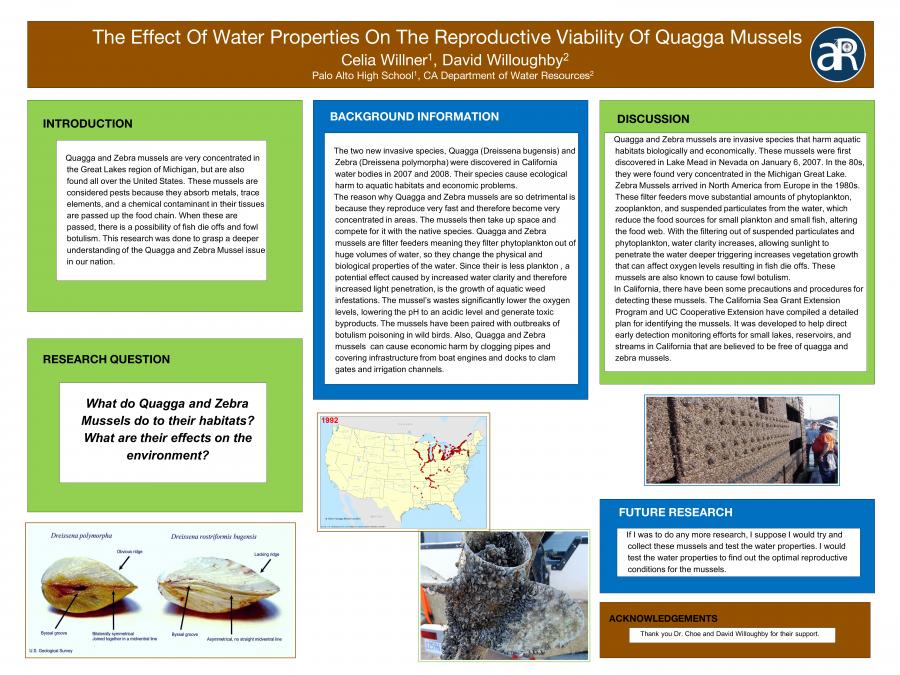The Effect of Water Properties on the Reproductive Viability of Quagga Mussels by Ceilia W.
Presentation
Summary
What type of water properties are optimal for Quagga Mussels? In Southern California bodies of water, do the water properties adversely affect the reproductive viability of the Quagga Mussels? Quagga and Zebra mussels are mainly found in the Great Lakes area, but have made their way to California and Nevada. These mussels invade pipes, boats, docks and can cause damage to water treatment facilities. They also interrupt the food chain by absorbing nutrients that would normally be consumed by other species. By absorbing these plants, the mussels cause the water to become clear. The mussels absorb all of the plankton in the water. Plankton performs photosynthesis and creates food for other species. In the Great Lakes they have decreased the populations of salmon and whitefish, and even native mussel species. The invasive mussels are filter feeders meaning they promote water clarity allowing sunlight to reach the bottom benthic layer of the water and create a perfect environment for algae blooms.Algae blooms in the great lakes have killed many fish and aquatic birds in the Great Lakes region. Quaggas and zebra mussels will also colonize beds of native clams and other invertebrates. The feeding abilities of the colonized native organisms are affected to the point of stressing and killing populations of other species....I will collect water using 45 gallon buckets. The water will be from a lake in Nevada, or Southern California because the water is contaminated. I will then measure the temperature, salinity, calcium levels, and pH of the water in order to get accurate data. I will track the life of the veligers, the babies, through their life and their reproductive viability. Each day I must record the water properties and the size and weight of the mussels. I will need to paint the mussels in order to track each one...

